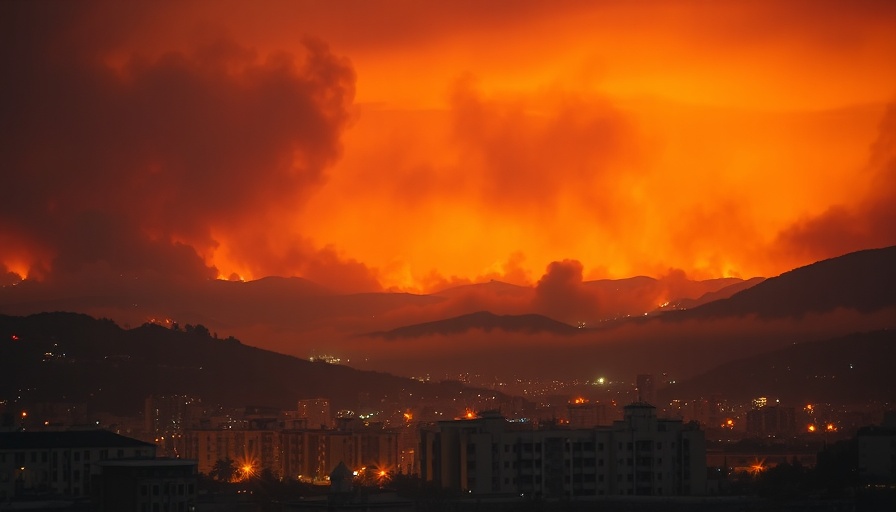
Understanding the Impact of Wildfire Smoke
Wildfires can spark a host of problems, not only for the environment but also for our health and wellbeing. Did you know that smoke from these raging fires can cause eye irritation and exacerbate existing conditions like allergies and asthma? For concierge medical practice owners, it’s crucial to understand the impact of wildfire smoke on your patients, as their health directly influences their overall wellness journey.
Empathetic Listening: An Essential Tool
As a health practitioner, you have a unique opportunity to engage with your patients during difficult times. When patients express discomfort or worry about their eye health during smoke events, practice empathetic listening. This not only helps build trust in your medical establishment but allows you to offer personalized advice that pays attention to their specific needs, enhancing the patient experience.
Practical Tips for Managing Eye Irritation
Inform your patients of practical ways they can manage eye irritation caused by wildfire smoke, including: 1) Using artificial tears for lubrication, 2) Wearing sunglasses outside to block smoke particles, 3) Keeping windows closed to limit exposure, 4) Avoiding contact lenses which can exacerbate irritation, and 5) Seeking fresh air indoors by using air purifiers. By providing these tips, you can enhance your role as a trusted source in their health maintenance.
Promoting Wellness Through Education
Education is a powerful weapon against misinformation and fear. Incorporate regular educational sessions or resources into your practice that explain the influence of natural disasters, like wildfires, on health. By proactively providing knowledge, you can empower your patients to make informed decisions regarding their health during smoke events.
Community Connection: Reducing Anxiety Through Support
Wildfires often evoke feelings of anxiety and helplessness among communities. Establishing a supportive environment within your practice can help alleviate such concerns. Consider hosting community events or support groups focused on coping strategies during such crises. Creating a safe space for discussion not only nurtures patient relationships but positions your practice as a vital resource.
Commitment to Preventive Care
Your dedication to your patients’ welfare can include assessments for long-term issues triggered by smoke exposure. Assessing the potential impacts of environmental factors and providing a proactive care plan can establish an ongoing relationship anchored in wellness. This commitment to prevention ensures your standing as a top local concierge practice where patients feel seen and cared for.
 Add Row
Add Row  Add
Add 




Write A Comment